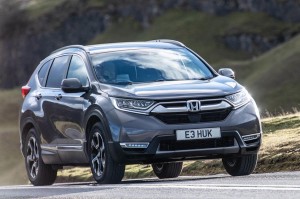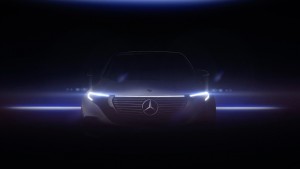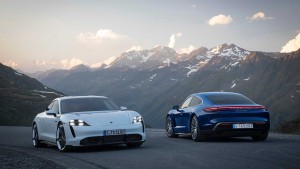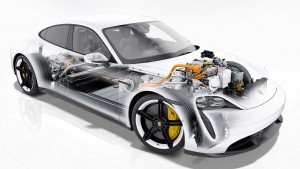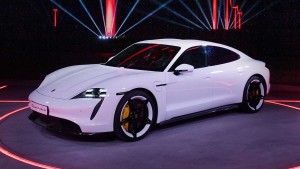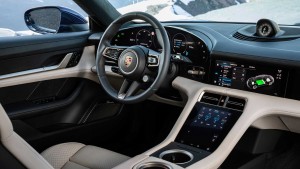Monthly Archives: September 2019
Honda CR-V Hybrid Getting Ready for US Release
Japanese automaker Honda is finally bringing its first hybrid sport utility vehicle in the US. The product is under the Honda CR-V range. The auto is set to go on sale in the fall of this year, and its deliveries to customers will start in 2020.
The hybrid SUV comes with a power boost compared to the existing gasoline-fed CR-V. In all, the auto produces 212 hp, which is 22 hp more than its sibling. Although no official figures are available yet, Honda estimates that the hybrid model will have a 50 percent improvement in terms of fuel efficiency than its gas counterpart. Also, we have no word yet about how far the pure electric mode of the SUV will take it at full charge.
Two electric motors complement the gas engine of the hybrid CR-V. Each motor is distributed in the front and rear axles, giving it an all-wheel-drive system.
The interior design of the hybrid CR-V is basically the same as its current gas variant. Highlighting its cabin is the 7-inch touchscreen with Android Auto and Apple CarPlay. Meanwhile, going for the Touring trim of the model adds a Qi pad that offers wireless charging for smartphones.
The SUV is equipped with the Honda Sensing as a standard feature. This provides adaptive cruise control, collision mitigation braking with pedestrian sensing, and road and lane departure mitigation system. Those who are looking for extra safety features in their vehicles can avail of the CR-V’s optional blind spot information system, rear cross-traffic monitoring, and automatic high beams.
NHTSA Requires Installation of Fake Sounds in Hybrid and Electric Vehicles
Depending on how you will look at it, the barely audible sound that hybrid and electric vehicles emit can be a good thing or a bad thing. The humming sound they have is a big leap in reducing noise pollution in neighborhoods and highways. However, it can also pose a risk to people who are visually impaired or blind. Therefore, the United States federal government, through the National Highway Traffic Safety Administration, is proposing automakers to include artificial motor sounds in the system of the said products.
Based on the latest developments, the NHTSA will be requiring carmakers to install a set of fake sounds in their hybrid and EV units. The agency is looking to limit the number of allowable fake sounds in the vehicles though.
The proposal modifies the set of rules that the US government released in 2018 that necessitate the inclusion of fake motor sounds in hybrids and EVs at low speeds so that people will notice them, particularly those who are visually impaired or blind. NHTSA has set the deadline for the full compliance of automakers to 2020. Meanwhile, the European Union has the same law that will be fully enforceable in 2021.
Without artificial sounds, the only noises that hybrids and EVs produce just come from wind resistance or tire noises. These are very evident during moderate and high speeds only.
With that, the new rule mandates that new EVs under 10,000 pounds should be fitted with audible artificial sounds when traveling under 20 mph whether going forward or in reverse. The agency is yet to specify which types of sounds it will allow. They explained that the fake motor sound is no longer required at high speeds because the tire and wind noises already “provide adequate audible warning to pedestrians”.
A Look at the Features of the Porsche Taycan EV
Porsche just entered the electric vehicle fray with its new Taycan. The new Porsche Taycan is offered in two trims and it is scheduled to be sold in the market in December 2019.
The Porsche Taycan aims to be a strong entry in the EV market with its slew of amazing features. Here is a quick look at the highlights of the auto:
Performance
Initially, the Taycan is available in Turbo and Turbo S trims. A Turbo Cross Turismo is slated for next year.
The Taycan has one electric motor for the front axle and another at the rear axle. Porsche utilizes permanent-magnet synchronous motors that have permanent magnets situated between the rotor and stators. The feature makes the auto very expensive to produce but it provides a smaller, lighter and more efficient design compared to other EVs.
Both the Turbo and Turbo S offer 616 hp but taking into play their launch control systems give the two 671 hp and 751 hp, respectively. On the other hand, the torque of the former is 627 lb-ft while the latter produces 774 lb-ft.
The 0-60 mph acceleration of the Turbo is 3 seconds and the Turbo S is 2.6 seconds. Both trims have an electronically-limited top speed of 161 mph.
A 93.4 kW lithium-ion battery takes the Turbo by around 237-280 miles on the WLTP scale on a full charge. The Turbo S can reach 241-256 miles. The 800v electric architecture of the Taycan can hold up to 270 kW of power and it can be charged from 5 to 80 percent in 22.5 minutes.
Design
The Taycan carries the distinctive design of the current Porsche cars. It has a 5,100 lb curb weight but it feels very agile and it has a good downforce. It should be noted that the car has a drag coefficient of 0.22.
The Taycan has a rear spoiler with three settings to improve airflow. Cooling flaps also help keep the car firm on the ground.
Going inside the car reveals a dashboard dominated by displays, including a 16.8-inch curved display on top of the steering column. At the center is another 10.9-inch touchscreen embedded in the dashboard.
Pricing
At their base configurations, the cost of the Taycan Turbo starts at $153,310 and the Turbo S begins at $187,610.

